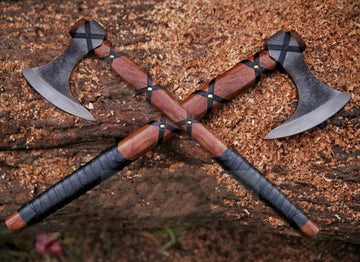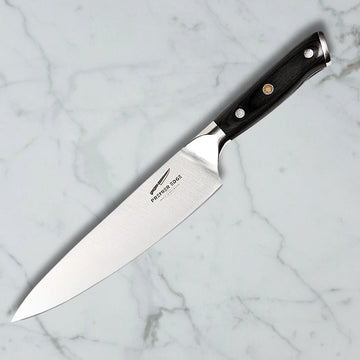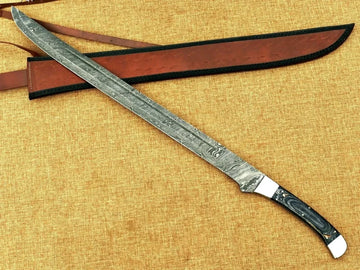iking axes have captured the imagination of history enthusiasts, reenactors, and collectors for generations. These versatile tools and weapons played a crucial role in Norse culture, serving as both practical implements for everyday tasks and formidable arms in battle. In this article, we'll explore some of the best Viking axe designs, their historical significance, and what makes them stand out in modern reproductions.
Historical Context
Vikings used a variety of axe types, each suited for different purposes. The most common were:
-
Bearded Axe (Skeggøx): Characterized by its distinctive downward-curving blade.
- Dane Axe: A long-handled axe with a broad blade, often used two-handed.
- Hand Axe: A smaller, single-handed axe used for both combat and utility.
These axes were not just weapons but also symbols of status and craftsmanship.
Characteristics of the Best Viking Axes
When evaluating Viking axes, several factors contribute to their quality and authenticity:
- Historical Accuracy: The best reproductions closely mimic the design, weight, and balance of historical finds.
- Craftsmanship: High-quality axes feature hand-forged blades and carefully shaped handles.
- Materials: Authentic reproductions use period-appropriate materials like high-carbon steel for blades and hardwoods for handles.
- Functionality: A good Viking axe should be capable of performing both as a tool and, in reenactment contexts, as a safe but realistic weapon.
- Aesthetics: While not all Viking axes were decorated, some feature period-accurate engravings or inlays.

Top Viking Axe Reproductions
- Petersen Type M Axe This versatile bearded axe is based on a common Viking design. Its curved cutting edge provides excellent chopping power, while the beard allows for a variety of grips. Quality reproductions of this axe are prized for their balance and historical accuracy.
- Mammen Axe Named after a famous archaeological find in Denmark, the Mammen axe is known for its elaborate silver inlay work. High-end reproductions of this axe are as much works of art as they are functional tools, showcasing the pinnacle of Viking craftsmanship.
- Danish Long-Bearded Axe This imposing weapon features an extended beard and a long handle, designed for powerful two-handed strikes. The best reproductions capture the formidable presence of this axe while maintaining historical accuracy in weight and balance.
- Broad-Bladed Dane Axe With its wide, thin blade, this axe type was favored by elite Viking warriors. Quality reproductions focus on achieving the correct blade geometry and weight distribution, crucial for its effectiveness as a cutting weapon.
- Viking Hand Axe Smaller and more versatile, these single-handed axes were everyday tools that could double as weapons. The best reproductions capture the compact efficiency of these axes, making them popular among reenactors and collectors alike.
Considerations When Choosing a Viking Axe
- Purpose: Determine whether you need the axe for reenactment, display, or functional use.
- Authenticity: Research the historical basis for the axe design you're interested in.
- Quality of Materials: Look for axes made with high-carbon steel blades and sturdy hardwood handles.
- Craftsmanship: Hand-forged blades and traditionally shaped handles often indicate higher quality.
- Safety: For reenactment use, ensure the axe meets safety standards for blunt weapons.
- Budget: Prices can vary widely, from budget-friendly options to high-end, artisanal pieces.
Care and Maintenance
To keep your Viking axe in top condition:
- Clean and oil the blade after use to prevent rust.
- Store in a dry place to protect both the blade and handle.
- Regularly check and tighten the head if it becomes loose.
- Sharpen the blade carefully, maintaining the original edge geometry.

Conclusion
The best Viking axes combine historical accuracy, quality craftsmanship, and functional design. Whether you're a reenactor seeking an authentic weapon, a collector interested in owning a piece of history, or an enthusiast looking for a unique tool, there's a Viking axe reproduction to suit your needs.
As you explore the world of Viking axes, remember that these objects represent more than just weapons or tools. They are tangible links to a fascinating period of history, embodying the skill of ancient craftsmen and the culture of the Norse people. By choosing a high-quality reproduction, you're not just acquiring an axe, but participating in the ongoing story of Viking heritage and craftsmanship.




